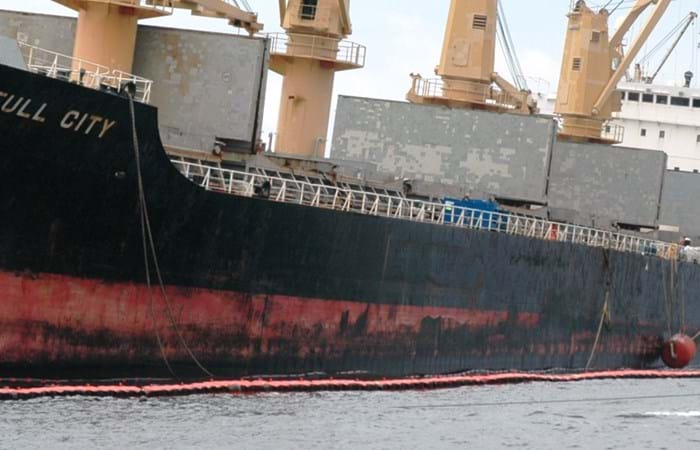On Thursday evening 30 July 2009 bulk carrier ‘Full City', 26,758 DWT (in ballast and at anchor off the port of Langesund, Norway, awaiting her berth) was trapped in a sudden storm, causing her anchor to drag, and came to rest on the rocks.
The engine room flooded and the double bottom fuel oil tanks breached which resulted in a major spill. Subsequently, the Norwegian Coastal Administration (NCA) mobilised all available crafts, oil barriers/ booms and anti-pollution equipment in order to battle the pollution.
SMIT Salvage contracted by owners
In the early morning of Friday 31 July, SMIT Salvage was contracted by the owners under a Lloyd's Open Form 2000 Scopic contract. SMIT's Norwegian partner tug and salvage company Buksér og Berging (B&B) was taken on as subcontractor. SMIT and B&B have a longstanding relationship and worked together on several projects such as the ‘Rockness' and most recently in December 2008 the ‘Crete Cement'.
Mobilisation
A salvage team from Rotterdam was immediately mobilised by charter plane, arriving on-site on Friday afternoon. The most essential salvage, pumping and fuel oil recovery equipment was airlifted as well. In the meantime, SMIT and B&B mobilised the DSV ‘BIG', tugs and a tank barge, while the NCA kept on site Coastguard vessel ‘Nornen' and tug ‘Balder'. Salvage operationThe salvage team recovered all remaining heavy fuel oils and other pollutants out of the holds and tanks by means of skimming and pumping. The recovered pollutants were transported to shore and disposed of. Following this, the damaged holds could be repaired. The vessel was then de-ballasted in preparation for a refloating attempt. With the assistance of three B&B tugs, the vessel was successfully refloated in the morning of Monday 17 August. Accordingly, SMIT Salvage towed the ‘Full City' to a more sheltered, deep-water NATO jetty at a distance of approximately nine miles from the grounding site. Upon arrival, in the late afternoon, the salvage team performed a final diving survey after which the vessel was redelivered to the owners.

